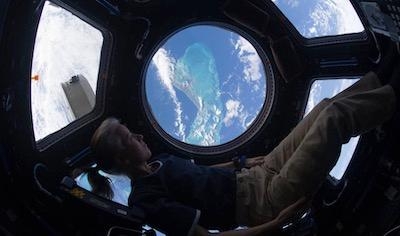Mon, Jul 01, 2024
Doesn't Seem Right -- Watery Grave Planned for 30-Year Old Station
SpaceX has won the NASA contract to build the vehicle that will bring the International Space Station (ISS) out of orbit and to its resting place on the seafloor in a remote ocean location.

The deorbit vehicle contract is worth about $843 million for Elon Musk’s SpaceX. NASA will operate the mission using SpaceX’s technology, it said. The current contract does not include the cost of launching the vehicle, and the separate contract for that will potentially go to SpaceX as well.
The first structural sections of the ISS were launched into a 250-mile orbit above the Earth in 1998. Some areas like core power sections and crew cabins were designed with a lifespan of only about 30 years, and much of the aging infrastructure is not easily or economically replaceable. And while not everyone agrees with the plan, international operators of the ISS will begin the process of decommissioning the station in about 2030.
The ISS is not a small object circling the Earth. It is 356 feet long or about one yard shy of an American football field including the end zones. The solar panels cover an acre, and the 13,696 cubic feet of habitable volume for crew members include 7 sleeping quarters, 2 bathrooms, and a gym. There is also a bubble-like bay window or cupola with a 3600 view.

In planning for the fate of the ISS after its useful life, NASA and its international partners wanted to be mindful of the problem of the amount of space debris circling in low Earth orbit and desired to remove as much of the station as possible. The deorbit vehicle will contain or attach to station components and using SpaceX’s successful technology will be programmed to ensure avoiding populated land areas while falling into a remote area of Earth’s oceans.
NASA Associate Administrator for Space Operations Mission Directorate, Ken Bowersox said, "Selecting a US Deorbit Vehicle for the International Space Station will help NASA and its international partners ensure a safe and responsible transition in low Earth orbit at the end of station operations. This decision also supports NASA’s plans for future commercial destinations and allows for the continued use of space near Earth."
More News
Witness Reported The Airplane Was Flying Low And Was In A Left Bank When It Struck The Power Line Analysis: The pilot was on final approach to land when the airplane collided with >[...]
How To Get A Story On Aero-TV News/Feature Programming How do I submit a story idea or lead to Aero-TV? If you would like to submit a story idea or lead, please contact Jim Campbel>[...]
From 2012 (YouTube Edition): A Segment Of The Sport Aviation World That Truly Lives "Low And Slow" Pity the life of ANN's Chief videographer, Nathan Cremisino... shoot the most exc>[...]
Aero Linx: International Business Aviation Council (IBAC) IBAC promotes the growth of business aviation, benefiting all sectors of its industry and in all regions of the world. As >[...]
Execute Missed Approach Instructions issued to a pilot making an instrument approach which means continue inbound to the missed approach point and execute the missed approach proce>[...]
 NTSB Final Report: Cozy Cub
NTSB Final Report: Cozy Cub ANN FAQ: Contributing To Aero-TV
ANN FAQ: Contributing To Aero-TV Classic Aero-TV: Seated On The Edge Of Forever -- A PPC's Bird's Eye View
Classic Aero-TV: Seated On The Edge Of Forever -- A PPC's Bird's Eye View ANN's Daily Aero-Linx (04.29.25)
ANN's Daily Aero-Linx (04.29.25) ANN's Daily Aero-Term (04.29.25): Execute Missed Approach
ANN's Daily Aero-Term (04.29.25): Execute Missed Approach




